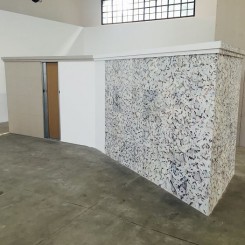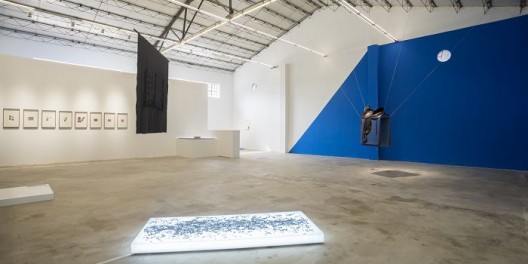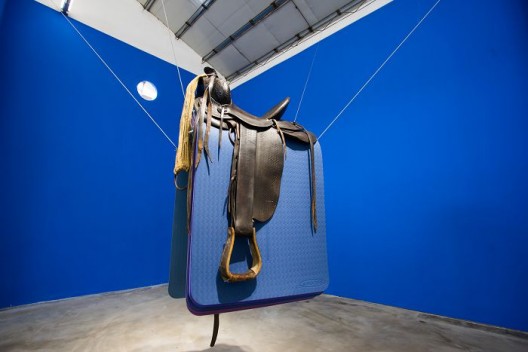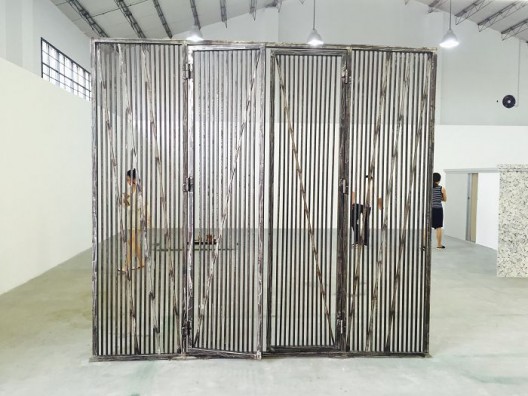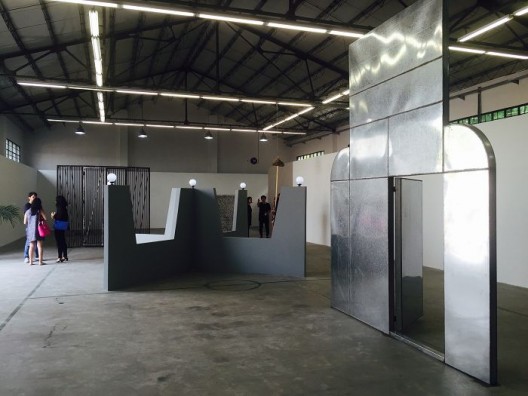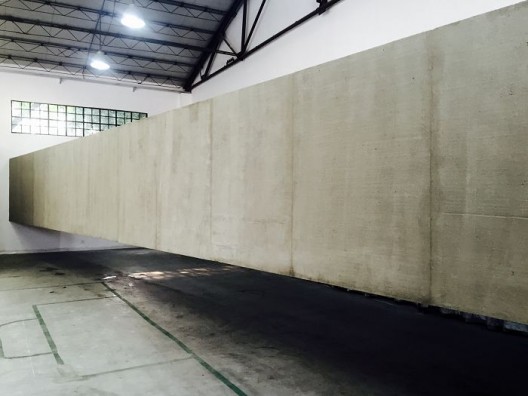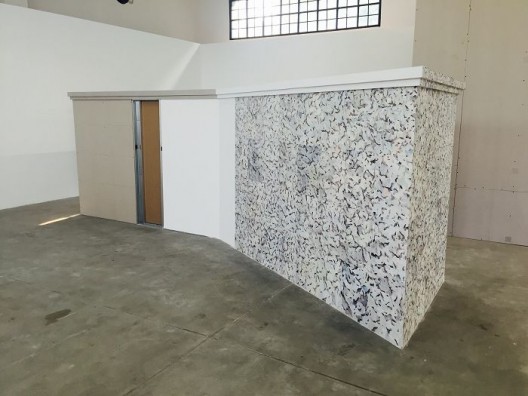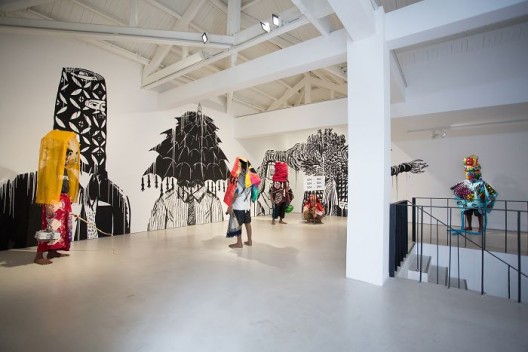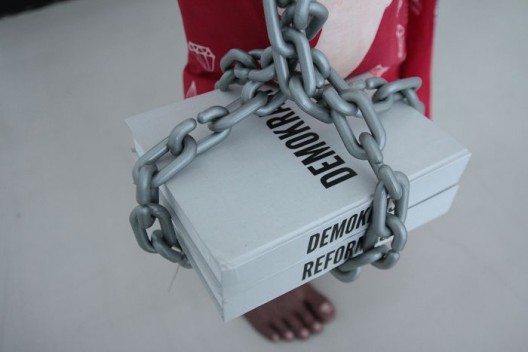With the onset of autumn, the heavy humidity has finally begun to dissipate. In tandem with the opening of Photo Shanghai and “The Shanghai Project”, the various West Bund art spaces opened new exhibitions; from the afternoon and into the evening, waves of people flooded into one space after another. Ran Dian invited Chen Zi’an to pick his top five exhibitions in Shanghai’s “West Side”.
Aike-Dellarco (Building. 6, 2555 Longteng Avenue, Xuhui District, Shanghai), Sep 8–Oct 9, 2016
A strong conceptual foundation has always allowed Hu Yun to project a clear path through his practice; in his writing of history, Hu is always sensitive to subjects worthy of exploration. Take the example of family and national histories which are focused around objects and photographs—one crux of China’s encounter with modernity was perhaps the moment missionaries landed on Chinese soil, a site of original trauma whose scene was as pretty and silent as a painting, and yet where the spiritual landscape portrayed is pockmarked with scars.
The work of the artist lies in adding a touch of sensibility behind his concept, like a subjective conjecture about the imagined perspective of the Jesuit missionaries. Moreover, Hu Yun’s sense of visual restraint is not only the distillation of a standardized conceptualism but in the details is similar to the philosopher Jacques Derrida’s famous deconstructive gesture: after inscribing the text, it is placed under erasure again. In the course of Hu’s writing of history, there are many erasures and re-inscriptions. This visual and psychological disconnect—of the sort whereby things are placed in broad daylight and yet retreat and disappear—drives one to move through the space and, at the same time, relies on wavering and lingering in the face of such visually restrained work.
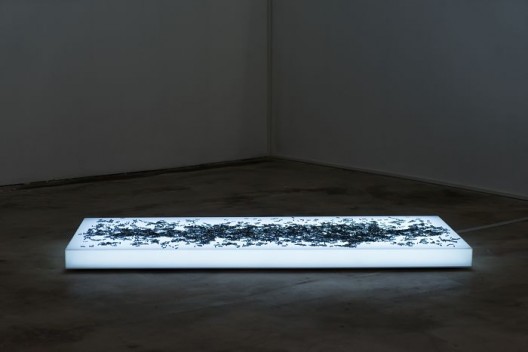
胡昀,《薄如纸》,中文印刷机铅字、灯箱,201.5 x 80.5 x 12 cm,2015. Hu Yun, “As light as a piece of paper”, typeface, lightbox, 201.5 x 80.5 x 12 cm, 2015.
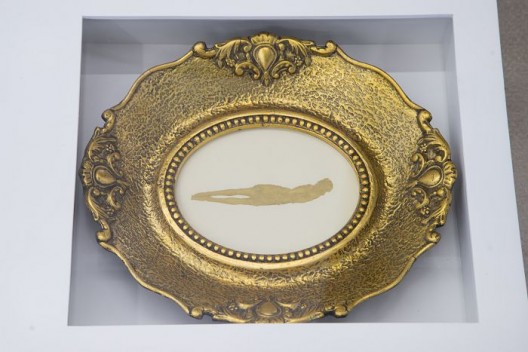
胡昀,《金叶》,纸、矿物颜料、古董镜框,32 x 36 cm,2016. Hu Yun, “Gold Leaf”, mineral pigment on paper, antique frame, 32 x 36 cm, 2016
Liao Fei, Matthias Liechti: “I Cannot See”
V Space (Building 8, 2555 Longteng Avenue, Xuhui District, Shanghai), Sep 8–Oct 9, 2016
In this collaborative exhibition between the local artist Liao Fei and the Swiss artist Matthias Leichti, numerous doors and windows served as visual pathways. Liao Fei created plasterboard walls mimicking the walls of compounds (xiaoqu) but with the railings removed, leaving the remaining supports to act as framing devices; four of these walls were combined to make a structure in the shape of a cross with the four panels facing outward, as if surveying the scene.
Apparently, Liao’s dialogue with Leichti began with free associations based on both artists’ creative interests. Their means of communication with one another as well as with the curator Yao Mengxi included the tools within architectural modeling software and also took place through the topology of space as articulated through their work: for example, how to maximize space with limited materials, the relationship between the square and the circle, and the conceptual value of the golden ratio.
People often complain about the rarity of good exhibitions nowadays. The success of “I Cannot See” lay in its control over the works’ interaction. If you have always hoped to see curating with pieces that work together and with a sense of imagination as to the on site display, you would not have been disappointed here.
Aaajiao (Xu Wenkai): “aaajiao’s org.a”
REFORMERart (5 Hunan Rd, Shanghai), Sep 10–Oct 20, 2016
Despite having already had two solo exhibitions in rapid succession this summer (perhaps a pace he has become used to thanks to his long-distance running), aaajiao recently transformed REFORMERart on Hunan road into a kind of cyber space. This time, the horizons of his media archaeology got to the format of the homepage, here simplified and printed on celluloid sheets, horizontally curled and laid over a metallic blue floor. A summary for those who missed out on his previous projects: for Shanghai MoCA’s Pavilion project, aaajiao provided viewers with the data from websites he launched and operated—a little like an old, soulful version of a Trevor Paglen work. And for OCAT Xi’an’s solo project (which can also now be found in the group exhibition “Overpop” at the Yuz Art Museum) he made “Email Trek”, an automated program that sounds out email accounts still in use amid the vast oceans of the internet.
If you are nostalgic and yet passionate about the unknown (yes, this combination of character traits is niche, I know, but if you still reminisce about e-flux’s old home page before their redesign, then this isn’t so niche after all), then before it is too late, perhaps you would like to follow aaajiao’s practice: see how he salvages memories too innumerable and yet too light.
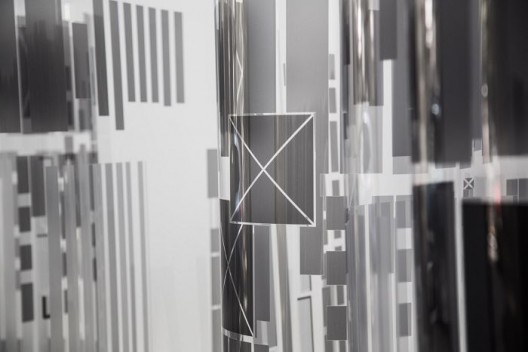
REFORMERart,aaajiao (徐文恺):“aaajiao’s org.a”,展览现场. Aaajiao (Xu Wenkai): “aaajiao’s org.a”, exhibition view
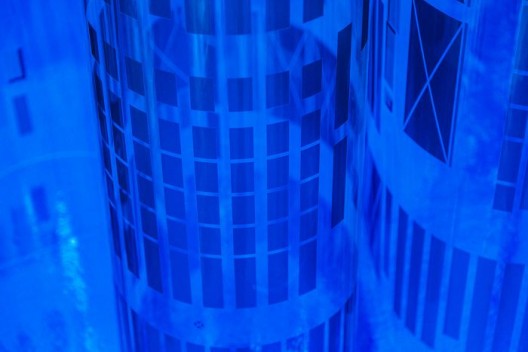
REFORMERart,aaajiao (徐文恺):“aaajiao’s org.a”,展览现场. Aaajiao (Xu Wenkai): “aaajiao’s org.a”, exhibition view
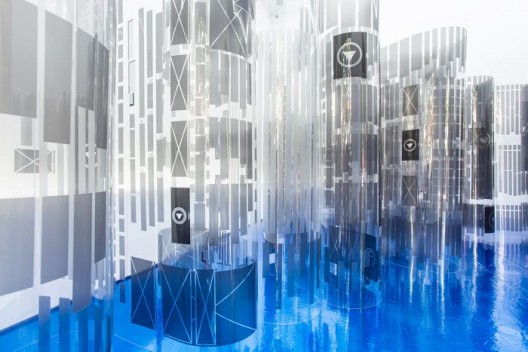
REFORMERart,aaajiao (徐文恺):“aaajiao’s org.a”,展览现场. Aaajiao (Xu Wenkai): “aaajiao’s org.a”, exhibition view
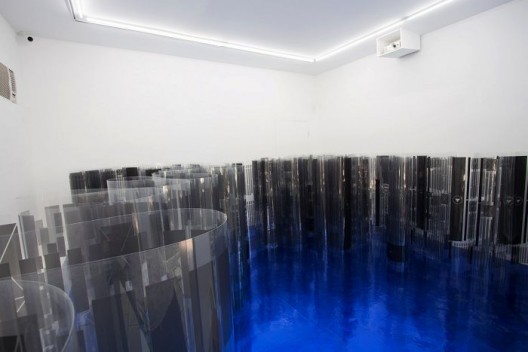
REFORMERart,aaajiao (徐文恺):“aaajiao’s org.a”,展览现场. Aaajiao (Xu Wenkai): “aaajiao’s org.a”, exhibition view
“Information Sculpture Highway”
MadeIn Gallery (Longteng Avenue, Xuhui District, Shanghai) Sep 7–Oct 22, 2016
MadeIn Gallery’s inaugural exhibition since moving to its new West Bund venue from m50 is a good opportunity to observe the tone of the gallery. This show perhaps allows young artists to gauge whether or not they fit this quality—if they can keep up with MadeIn Gallery’s creative pace and visual overload. While cutting across generations in its choice of artists, the exhibition wears an atmosphere that we ought to face with a high-speed, excessive attitude.
Those interested in horoscopes or Tarot cards will perhaps react to the dose of fatalism in Miao Ying’s new work. Meanwhile, aside from being involved with organizing the exhibition, Lu Pingyuan showed his new series Don’t Ask Me Who I Am, stories inspired by film stills from an old children’s animation, The Lion King—narratives which filled an entire wall.
Many of the artists’ works this time felt adaptable to larger as well as smaller spaces; the shift in the size of the gallery space allows greater flexibility (perhaps Wang Sishun’s little piece of pure gold at the door already offered a hint). The impression of this exhibition: rapid reactions to information, which might also remind you of how MadeIn Gallery posts on its own WeChat public account.
Of course, this sort of speed is often accompanied by fairly prevalent cynicism in the art scene. With this in mind, you might appreciate where Lu Pingyuan’s “Don’t Ask Me Who I Am” is placed. There are no spoilers for the content here: suffice to say that it wears an innocent smile; with its narrative, the work melts the audience.

苗颖,《男神,棕熊和独角兽》 ,布面打印、拉网展架,305 x 240 x 35 cm,2016. Miao Ying, “God, Bear and Unicorn”, print on fabric, metal, 305 x 240 x 35 cm, 2016
Eko Nugroho: “Uh-oh Uh-oh Uh-oh (the world complaining)”
Arario Gallery (Lane 7, 890 Henshan Rd, Xuhui District, Shanghai), Sep 10–Oct 28, 2016
Of all the exhibitions in Shanghai trying to gain the limelight, Arario has brought the artist Eko Nugroho along with Indonesian pop and traditional culture to Shanghai. Nugroho’s practice carries on the one hand a political intent with aspects of social intervention while at the same time building this impulse on top of the lexicon of folk culture. The elements in his installations are usually simple and light—sometimes even employing wooden placards as seen in demonstrations—yet their content and consumerist T-shirt slogans are transformed into a series of human-shaped installations associated with mass and traditional Javanese culture. Nugroho’s collage installations and his resistant stance as projected through his artistic practice might remind one of the native American artist and activist Jimmie Durham: they tell us that one can negotiate nimbly with seemingly extreme cultures.
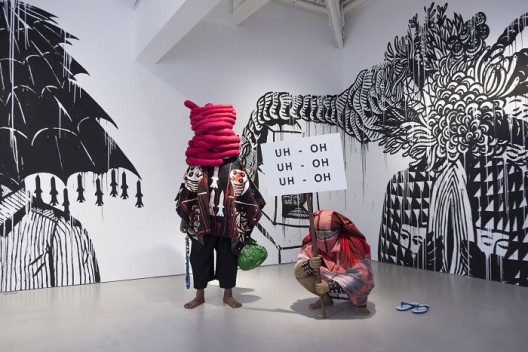
阿拉里奥画廊,艾柯·努格罗荷:“哎哟 哎哟 哎哟”,展览现场. Eko Nugroho: “Uh-oh Uh-oh Uh-oh (the world complaining)”, exhibition view
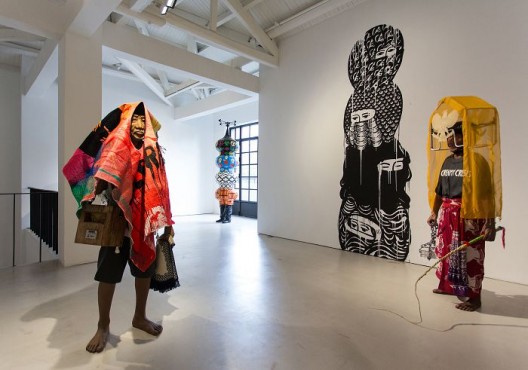
阿拉里奥画廊,艾柯·努格罗荷:“哎哟 哎哟 哎哟”,展览现场. Eko Nugroho: “Uh-oh Uh-oh Uh-oh (the world complaining)”, exhibition view

